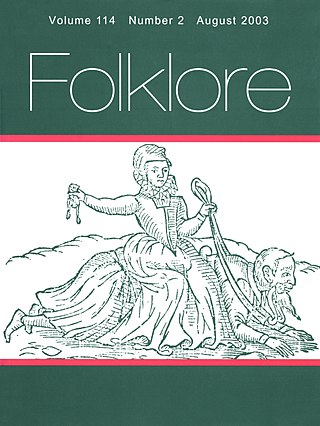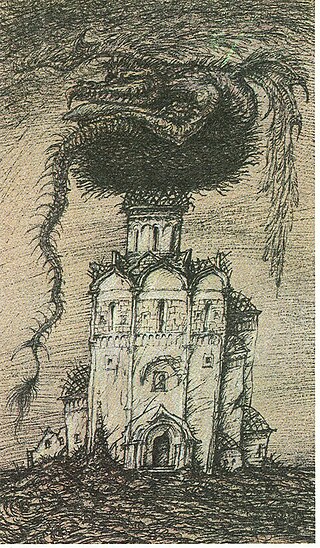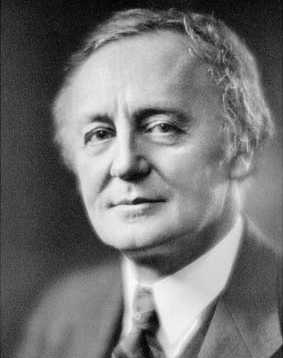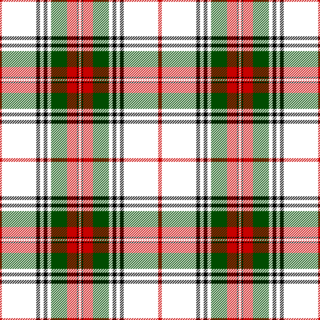Related Research Articles
American folklore encompasses the folklore that has evolved in the present-day United States mostly since the European colonization of the Americas. It also contains folklore that dates back to the Pre-Columbian era.
A tall tale is a story with unbelievable elements, related as if it were true and factual. Some tall tales are exaggerations of actual events, for example fish stories such as, "That fish was so big, why I tell ya', it nearly sank the boat when I pulled it in!" Other tall tales are completely fictional tales set in a familiar setting, such as the European countryside, the American frontier, the Canadian Northwest, the Australian outback, or the beginning of the Industrial Revolution.
The redcap is a type of malevolent, murderous goblin found in Border folklore. He is said to inhabit ruined castles along the Anglo-Scottish border, especially those that were the scenes of tyranny or wicked deeds and is known for soaking his cap in the blood of his victims. He is also known as Redcomb and Bloody Cap.

Folklore studies is the branch of anthropology devoted to the study of folklore. This term, along with its synonyms, gained currency in the 1950s to distinguish the academic study of traditional culture from the folklore artifacts themselves. It became established as a field across both Europe and North America, coordinating with Volkskunde (German), folkeminner (Norwegian), and folkminnen (Swedish), among others.
"Bear's Son Tale" refers to an analogous group of narratives that, according to Friedrich Panzer's 1910 thesis, represent the fairy tale material reworked to create the Anglo-Saxon poem Beowulf's first part, the Grendel-kin Story. Panzer collected over 200 analogue tales mostly from Eurasia. Others have added more examples from worldwide.
Kiviuq, also spelled Qiviuq, Kiviok and other variants, is a legendary hero of the epic stories of the Inuit of the Arctic regions of northern Canada, Alaska and Greenland. Versions of his adventures vary with the location and the storyteller. In Greenland he is known as Qooqa. In Alaska he is called Qayaq, which is short for Qayaqtuaġiŋñaqtuaq.

A Slavic dragon is any dragon in Slavic mythology, including the Russian zmei, Ukrainian zmiy, and its counterparts in other Slavic cultures: the Bulgarian zmey, the Slovak drak and šarkan, Czech drak, Polish żmij, the Serbo-Croatian zmaj, the Macedonian zmej (змеј) and the Slovene zmaj. The Romanian zmeu could also be deemed a "Slavic" dragon, but a non-cognate etymology has been proposed.

Charles Marius Barbeau,, also known as C. Marius Barbeau, or more commonly simply Marius Barbeau, was a Canadian ethnographer and folklorist who is today considered a founder of Canadian anthropology. A Rhodes Scholar, he is best known for an early championing of Québecois folk culture, and for his exhaustive cataloguing of the social organization, narrative and musical traditions, and plastic arts of the Tsimshianic-speaking peoples in British Columbia, and other Northwest Coast peoples. He developed unconventional theories about the peopling of the Americas.
Joseph "Jos" Montferrand was a French-Canadian logger, strongman, and folk hero of the working man and was the inspiration for the legendary Ottawa Valley figure Big Joe Mufferaw.

"The Master Maid" is a Norwegian fairy tale collected by Peter Christen Asbjørnsen and Jørgen Moe in their Norske Folkeeventyr. "Master" indicates "superior, skilled." Jørgen Moe wrote the tale down from the storyteller Anne Godlid in Seljord on a short visit in the autumn of 1842. Andrew Lang translated the tale to English and included it in his The Blue Fairy Book (1889). A later translation was made by George Dasent, in his Popular Tales from the North.

Jean de l'Ours or John the Bear, John of the Bear, John-of-the-Bear, John Bear, is the leading character in the French folktale Jean de l'Ours classed as Type 301B in the Aarne–Thompson system; it can also denote any tale of this type.

Grateful dead is both a motif and a group of related folktales present in many cultures throughout the world.
A nuggle, njuggle, or neugle, is a mythical water horse of primarily Shetland folklore where it is also referred to as a shoepultie or shoopiltee on some parts of the islands. A nocturnal creature that is always of a male gender, there are occasional fleeting mentions of him connected with the Orkney islands but he is more frequently associated with the rivers, streams and lochs of Shetland. He is easily recognised by his distinctive wheel-like tail and, unlike his evil counterparts the each-uisge or the nuckelavee, has a fairly gentle disposition being more prone to playing pranks and making mischief rather than having malicious intents.
William Crooke was a British orientalist and a key figure in the study and documentation of Anglo-Indian folklore. He was born in County Cork, Ireland, and was educated at Erasmus Smith's Tipperary Grammar School and Trinity College, Dublin.
Febold Feboldson is an American folk hero who was a Swedish American plainsman and cloudbuster from Nebraska. His exploits were originally published in 1923 in the Gothenburg Independent newspaper and the character is now largely considered a part of fakelore as opposed to a genuine folk hero.
The ceasg is a mermaid in Scottish folklore with the upper body of a beautiful woman merging with the tail of a grilse. She is also known in Scottish Gaelic as maighdean na tuinne or maighdean mhara.

Invented traditions are cultural practices that are presented or perceived as traditional, arising from people starting in the distant past, but which are relatively recent and often consciously invented by historical actors. The concept was highlighted in the 1983 book The Invention of Tradition, edited by Eric Hobsbawm and Terence Ranger. Hobsbawm's introduction argues that many "traditions" which "appear or claim to be old are often quite recent in origin and sometimes invented." This "invention" is distinguished from "starting" or "initiating" a tradition that does not then claim to be old. The phenomenon is particularly clear in the modern development of the nation and of nationalism, creating a national identity promoting national unity, and legitimising certain institutions or cultural practices.
Quebec has a rich history of folklore.
Canadian folklore is the traditional material that Canadians pass down from generation to generation, either as oral literature or "by custom or practice". It includes songs, legends, jokes, rhymes, proverbs, weather lore, superstitions, and practices such as traditional food-making and craft-making. The largest bodies of folklore in Canada belong to the aboriginal and French-Canadian cultures. English-Canadian folklore and the folklore of recent immigrant groups have added to the country's folk.
Blanche Lucile Macdonnell (1853–1924) was a Canadian author and folklorist, whose writing was described as 'full-blooded and instinct with Canadian life and thought.'
References
- ↑ Greenough, William Parker. "Canadian Folk-Life and Folk-Lore". Internet Archive. Retrieved April 18, 2014.
- ↑ Paul R. Magocsi, ed. (1999). Encyclopedia of Canada's Peoples. University of Toronto Press. p. 391. ISBN 9780802029386.